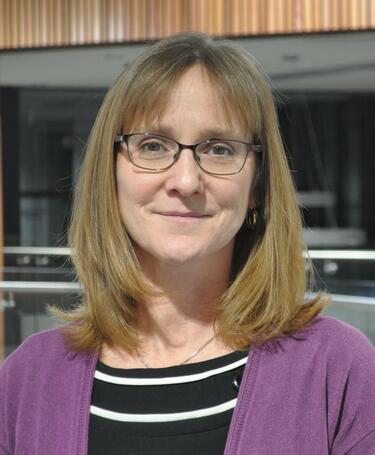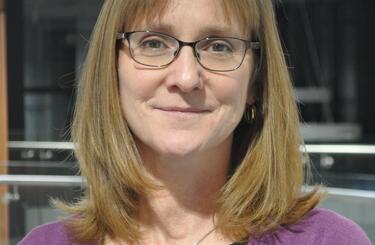
The journey to becoming a CQI Fellow

Suzanne Hill, Vice Chair of the CQI’s Membership Council, takes us through her experience of becoming a CQI Fellow and what others should be considering when applying for the grade
Within the byelaws of the Chartered Quality Institute, the Fellow grade is described as follows:“Fellows – being persons who have been Chartered Quality Professionals at the Member grade for a minimum of two continuous years and demonstrate to the satisfaction of the Board, an outstanding contribution to quality.”
Fellow (FCQI) is the highest and most prestigious grade awarded by the CQI, and the application process is rigorous and undertaken in accordance to a process. I have recently been successful in achieving this status, and I would like to share my journey and some tips to help those who are also applying for the grade.
Consider whether Fellow is the right grade
The CQI has a “CQI grade quiz”, and completing this is a good way to understand if the Fellow grade is the right level for you at this stage. I have been working as a senior quality and business improvement leader for many years, and this gave me the confidence that I could apply for this grade.
Read the form
It goes without saying that you need to read the CQP FCQI upgrade form first before making any decisions. The form details the structure of the application process. It also provides important information on the requirements. There are a couple of minimum requirements you need to meet before considering moving on to the next steps:
- Being at Member grade for at least two continuous years.
- Having a current and up-to-date record of continuing professional development (CPD) spanning at least a year.
I ticked both these boxes, and continued on further to understand what the criteria are for demonstrating “an outstanding contribution to quality”.
Within the upgrade form – under the aforementioned title – it says that applicants must demonstrate that they:
- Have furthered the objectives of quality through voluntary contributions to the CQI
- Are a peer-acknowledged expert with acclaimed contributions to a quality field
- Have carried out outstanding service on professional committee/s
- Have developed and supported the careers of others, especially less experienced quality professionals
- Have made a voluntary contribution to the objectives of quality through other voluntary means, including activities started as part of a work requirement but taken beyond the original brief.
The form also states:“This list is not exhaustive. Applicants must demonstrate that they meet at least three of the five criteria above, or equivalent, in order to be considered for the grade of Fellow. Factors such as the depth and breadth of involvement, personal contribution, and activities that are ‘over and above’ are crucial and therefore should be covered in relation to all criteria.”
Personally, I found these words quite daunting. It was difficult to know where to start to create a portfolio that would demonstrate at least three of these criteria. It was good to know that the Member Journey Team at the CQI were available to assist me with any questions I might have.
Generate ideas
What helped me particularly with this part of the process was to bounce ideas around with other people. Fortunately, I was lucky enough to know another Chartered Quality Professional who was also considering the upgrade to Fellow, so we met up in a relaxed, coffee-shop environment and shared thoughts on our initial preparation.
The three hours we allocated flew by. It was so useful to share our past achievements, not only to consider them for our own portfolios, but it also triggered thoughts about what else we have both achieved. The two-way open discussion session led us to recall all sorts of examples that we could use from our careers and volunteering activities.
It is amazing how much you forget, until you start searching your CV, documents and presentations on your computer’s hard drive. The structure of the criteria helped us to focus and group our thoughts, like the spines on a fishbone or an affinity diagram. We were then both able to identify which three criteria we were going to use to demonstrate our outstanding contribution to quality.
Create the portfolio
With the ideas collated, the next step was to create my portfolio. I decided to use a Word document starting with a cover letter, which indicated the criteria my portfolio covered [tell ‘em what you’re going to tell ‘em]. I then limited myself to two-pages for each criteria. This was challenging, but it helped me to be concise and only include the most relevant points. I also included three appendices which were: certificates of achievement, evidence of customer satisfaction and CPD evidence.
Finally, one of the most informative exercises I did was to cross-reference each subset of my portfolio with the CQI Competency Framework [tell ‘em what you told ‘em]. This confirmed that my portfolio covered all aspects of the framework, and also highlighted some areas where I need to focus my ongoing CPD activities.
Completing the application form
It is crucial to include referees before submitting your application. The form says to submit references “from two existing Chartered Quality Professionals who have been provided with a copy of the applicant’s portfolio and can support and inform the application from first-hand experience.” For me, this was a very important step in the process, and I took the time out to have one-to-one meetings with each of these to present my portfolio in person.
Once my references were sorted, I submitted my completed application form and portfolio document and paid the application fee. I was kept informed of the progress of my application by the Member Journey Team, and was quickly offered a date for a peer interview.
Peer interview
For me, the peer interview was, in a strange way, the most enjoyable aspect of the process – although I was rather nervous. In a relaxed atmosphere, I was asked to present my portfolio to the panel. This was followed by a suite of good questions posed by the panel to assure them that I met the criteria and was worthy of the grade. The panel had the autonomy to make their decision, and before the end of the same day I had been informed of the positive result.
Reflection
Overall, making this application was a very positive experience. Reflecting on my achievements in the field of quality, and being asked to present them in a structured way, has helped me to become very proud of my career in quality. Achieving FCQI has also inspired me to continue to drive myself to excel in all aspects of the CQI Competency Framework, as well as to do what I can to inspire others who are ready to achieve the Fellow grade.
I wish everyone well with their applications. Of course, for those who are not successful first time around – don’t feel disheartened. Instead, ask for as much feedback as possible to learn from the experience and to help you to understand the gaps that need to be filled before you re-apply.